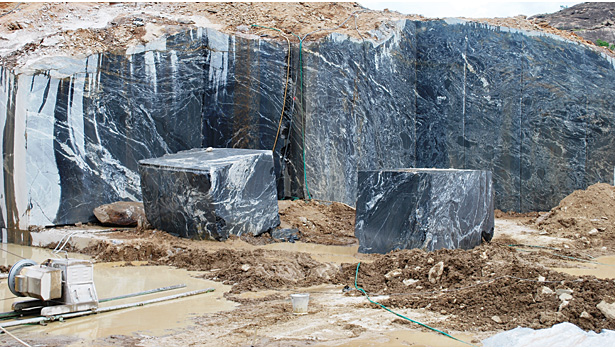The Hidden Treasures: Discovering Granite Quarries in South Africa
The Hidden Treasures: Discovering Granite Quarries in South Africa
Blog Article
Introducing the Mysteries of Granite Quarrying: Where Toughness and Elegance Meet
The globe of granite quarrying is a world where the raw strength of nature assembles with human virtuosity to develop structures that stand the test of time with an air of beauty. From the midsts of quarries to the thorough sprucing up in workshops, the procedure of transforming granite into architectural marvels is a complicated dance of custom and technology. As we peer right into the midsts of this old craft, we begin to uncover the covert complexities that shape the extremely essence of our developed atmosphere.
The Beginnings of Granite Quarrying
In the annals of architectural history, the origins of granite quarrying are shrouded in a tapestry of ancient craftsmanship and geological marvels. Dating back to ancient Egypt and Mesopotamia, the removal of granite from quarries noted the start of a trip that would at some point bring about the production of some of the world's most iconic frameworks.
Granite quarrying's origins can be mapped to the knowledgeable craftsmens that acknowledged the stone's sturdiness and aesthetic appeal. Through a mix of primitive devices and sheer decision, these early quarry employees uncovered granite blocks that would certainly end up being the foundation of civilizations.
As civilizations advanced, so did the strategies of quarrying granite. The Romans, renowned for their engineering prowess, created innovative techniques for extracting granite to construct monoliths, temples, and roads that stood the examination of time.
The tradition of these ancient quarrying techniques proceeds to shape modern style, with granite staying a symbol of toughness and sophistication in building projects around the world. (granite quarries in south africa)
Tools of the Quarrying Profession
The development of granite quarrying techniques from old worlds to modern times highlights the important function played by the devices of the quarrying sell shaping the market's practices. In old times, quarrying tools were primary, commonly containing knives, hammers, and wedges made from materials like bronze or iron. These devices required substantial manpower and time to remove granite blocks from quarries.

In addition, the intro of pneumatic tools and high-powered machinery has significantly decreased the physical labor required in quarrying operations, boosting employee safety and security and performance. As the quarrying market remains to innovate, the devices of the profession stay at the forefront of driving progression and forming the future of granite removal.
Removing Blocks of Granite
Utilizing precision equipment and advanced strategies, the extraction of granite obstructs from quarries has actually come to be a sophisticated process browse around this web-site in the contemporary quarrying market. The first action involves identifying the area and dimension of the granite deposit to determine one of the most effective extraction approach. When a suitable website is chosen, the extraction procedure begins with the drilling of openings for the placement of nitroglycerins. Managed blasting strategies are then employed to damage apart the granite into convenient sections.

Sprucing Up and Completing Techniques
To achieve a perfect surface area on granite blocks, experienced craftsmens employ a series of careful sprucing up and finishing methods. After the first extraction and shaping procedures, the granite obstructs undergo an extensive sprucing up stage to enhance their natural appeal and durability.
Along with polishing, ending up techniques are put on additional fine-tune the granite's look. These strategies may include flaming, developing, or cleaning, each offering one-of-a-kind textures and finishes to fit different visual preferences. Flaming, for example, includes revealing the granite surface area to high temperatures to create a rough, textured finish, suitable for outside applications where slip-resistance is necessary. Sharpening, on the various other hand, provides a matte finish that is smooth to the touch, perfect for indoor countertops and flooring. By carefully selecting and applying these polishing and finishing strategies, craftsmens can change raw granite obstructs right into charming items that showcase both stamina and beauty.

Environmental Effect and Sustainability
With the expanding emphasis on ecological consciousness in the market, granite quarrying techniques are progressively looked at for their effect on all-natural sources and long-term sustainability. Quarrying for granite can have considerable ecological implications. The removal procedure frequently entails the use of heavy equipment, nitroglycerins, and large amounts of water, bring about habitat destruction, soil disintegration, and water air pollution. Additionally, the transportation of granite from quarries to refining centers generates carbon emissions, additionally adding to ecological deterioration. granite quarries in south africa.
To mitigate these impacts and guarantee sustainability in granite quarrying, market stakeholders are embracing different steps. Carrying out sophisticated innovations to minimize power usage and water usage, recovering quarried land for environmental remediation, and promoting responsible sourcing practices are some strategies being employed. Furthermore, certifications such as the Woodland Stewardship Council (FSC) and the Management in Energy and Environmental Style (LEED) help consumers recognize eco-friendly granite products.
Conclusion
To conclude, granite quarrying is a process that calls for specialized tools and techniques to essence blocks of granite and polish them to a high degree of finish. While the ecological impact of quarrying can be substantial, efforts this content are being made to boost sustainability practices in the sector. In general, granite quarrying is a fragile balance in between utilizing the toughness and beauty of this all-natural stone while lessening its influence on the atmosphere.
Report this page